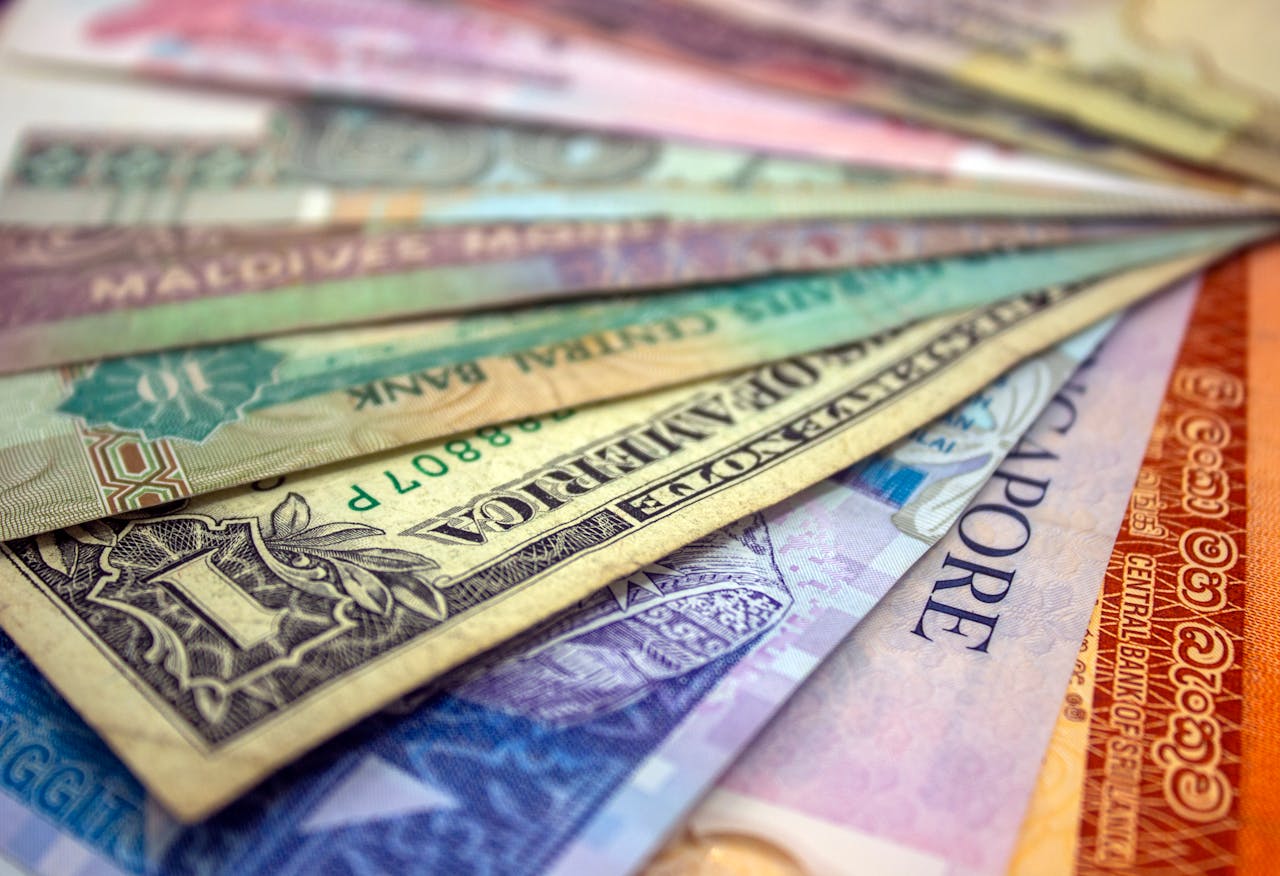The U.S. dollar experienced its largest weekly loss in over a year, falling 1.8% after President Donald Trump hinted at a softer stance on tariffs against China. In an interview with Fox News, Trump expressed optimism about reaching a trade deal, stating, “We have one very big power over China, and that’s tariffs.”
The dollar index dropped 0.8% on Friday before narrowing losses to 0.65%, signaling heightened uncertainty. Analysts warned that shifts in U.S. tariff or interest rate policies could trigger a dollar rebound. Capital Economics’ Simon MacAdam noted the dollar’s strength stems from robust U.S. economic data and favorable interest rate differentials.
Global markets responded cautiously. Wall Street saw modest declines, with the S&P 500, Dow Jones, and Nasdaq losing 0.3%, 0.3%, and 0.5%, respectively. China's blue-chip index gained 0.8%, and the yuan strengthened by 0.7% in offshore trading.
Oil prices stabilized after Trump urged Saudi Arabia and OPEC to lower costs, benefiting U.S. crude futures, which rose to $74.66 a barrel. Brent crude increased by 0.3% to $78.50. Amundi’s Amelie Derambure highlighted that Trump’s oil policy could positively impact global economies, including Europe.
European stocks showed optimism early in the day, supported by luxury retail gains, but flattened by midday. BlackRock CEO Larry Fink suggested renewed investment opportunities in Europe, citing fading pessimism.
The yen strengthened 0.2% after the Bank of Japan raised interest rates to their highest since 2008, signaling potential future hikes. Meanwhile, the 10-year U.S. Treasury yield dipped to 4.6194%, below recent highs.
As the Federal Reserve and European Central Bank prepare for policy meetings next week, markets remain watchful of economic moves under the Trump administration.



 Precious Metals Rally as Silver and Platinum Outperform on Rate Cut Bets
Precious Metals Rally as Silver and Platinum Outperform on Rate Cut Bets  Japan Inflation Holds Firm in November as BOJ Nears Key Rate Hike Decision
Japan Inflation Holds Firm in November as BOJ Nears Key Rate Hike Decision  Honduras Election Recount Delayed Amid Protests and Political Tensions
Honduras Election Recount Delayed Amid Protests and Political Tensions  U.S. Dollar Steadies Near October Lows as Rate Cut Expectations Keep Markets on Edge
U.S. Dollar Steadies Near October Lows as Rate Cut Expectations Keep Markets on Edge  UN Warns Gaza Humanitarian Aid at Risk as Israel Registration Rules Threaten NGO Operations
UN Warns Gaza Humanitarian Aid at Risk as Israel Registration Rules Threaten NGO Operations  Trump Administration Reviews Nvidia H200 Chip Sales to China, Marking Major Shift in U.S. AI Export Policy
Trump Administration Reviews Nvidia H200 Chip Sales to China, Marking Major Shift in U.S. AI Export Policy  Japan Exports to U.S. Rebound in November as Tariff Impact Eases, Boosting BOJ Rate Hike Expectations
Japan Exports to U.S. Rebound in November as Tariff Impact Eases, Boosting BOJ Rate Hike Expectations  Yen Near Lows as Markets Await Bank of Japan Rate Decision, Euro Slips After ECB Signals Caution
Yen Near Lows as Markets Await Bank of Japan Rate Decision, Euro Slips After ECB Signals Caution  Fernando Haddad Confirms He Will Not Run for Office in 2025, Signals Possible Exit as Brazil’s Finance Minister
Fernando Haddad Confirms He Will Not Run for Office in 2025, Signals Possible Exit as Brazil’s Finance Minister  Canada Signals Delay in US Tariff Deal as Talks Shift to USMCA Review
Canada Signals Delay in US Tariff Deal as Talks Shift to USMCA Review  Asian Markets Rebound as Tech Rally Lifts Wall Street, Investors Brace for BOJ Rate Hike
Asian Markets Rebound as Tech Rally Lifts Wall Street, Investors Brace for BOJ Rate Hike  Argentina Unions Rally Against Milei’s Labor Reform as Congress Debates Key Bill
Argentina Unions Rally Against Milei’s Labor Reform as Congress Debates Key Bill  U.S. Senators Move Toward Deal to Strengthen Military Helicopter Safety Rules
U.S. Senators Move Toward Deal to Strengthen Military Helicopter Safety Rules  BoE Set to Cut Rates as UK Inflation Slows, but Further Easing Likely Limited
BoE Set to Cut Rates as UK Inflation Slows, but Further Easing Likely Limited  U.S. Stock Futures Edge Higher as Micron Earnings Boost AI Sentiment Ahead of CPI Data
U.S. Stock Futures Edge Higher as Micron Earnings Boost AI Sentiment Ahead of CPI Data  Asian Currencies Trade Sideways as Dollar Weakens Ahead of Key U.S. Data
Asian Currencies Trade Sideways as Dollar Weakens Ahead of Key U.S. Data  RBA Unlikely to Cut Interest Rates in 2026 as Inflation Pressures Persist, Says Westpac
RBA Unlikely to Cut Interest Rates in 2026 as Inflation Pressures Persist, Says Westpac 































